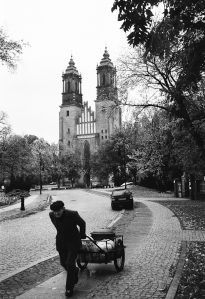“I am teaching you how to see as opposed to merely looking.” – Carlos Castaneda
Whether one buys the premise that Carlos Castaneda was a powerful acolyte on the Yaqui Warrior’s Path of the Nagual or was instead a New Age hoax that bewitched a generation of dreamy-eyed, latter-day hippies, there are some interesting philosophical concepts bandied about in his ten books. One that has always stuck with me and seems apropos to the world of photography is the Art of Seeing.
In the Castaneda books seeing is the ability to look beyond our current, facile reality into the realm of magical entities and pure energy. This, as opposed to merely looking, as in “to look at something” which implies a superficial glance. Fine-art photographers don’t have to wax metaphysical to understand the requirement to see things differently than others. Bill Brandt – the preeminent British photographer of the 20th century – said it best when he wrote: “It is part of the photographer’s job to see more intensely than most people do. He must have and keep in him something of the receptiveness of the child who looks at the world for the first time or of the traveler who enters a strange country.”
As photographers, our visual antennae must be all-aquiver, attentive, and receptive to see the artistic possibilities that abound around us. Often that also means getting out of our comfort zone. Comfort zones are just that and we hang out in them quite a bit because they are, well, comfortable (read: non-challenging). But they are also constricting us to what we allow ourselves to know and see. That, I believe, is why photowalking outings can be so interesting. It forces you to deal with (see) subject matter you normally might merely glance at and saunter past with little thought or appreciation. I was at a recent club-organized photowalk in an old train station. It was fascinating to watch how the many photographers would approach differently the subject matter of four walls, tiled floor, and high windows and ceiling. It was also interesting to see how the passers-by would stop and look – perhaps even SEE – the station details because people with cameras were doing the same.
Go on your own photowalking jaunt, or pick themed projects to occasionally work on. Venture from your comfort zone on occasion and look for challenges that do just that. My personal goal is not to stop looking around, but to start seeing more.
















